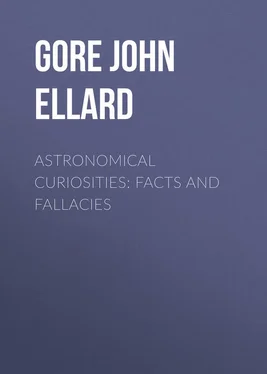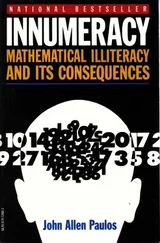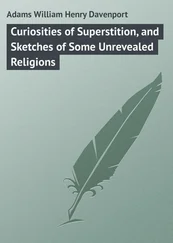John Gore - Astronomical Curiosities - Facts and Fallacies
Здесь есть возможность читать онлайн «John Gore - Astronomical Curiosities - Facts and Fallacies» — ознакомительный отрывок электронной книги совершенно бесплатно, а после прочтения отрывка купить полную версию. В некоторых случаях можно слушать аудио, скачать через торрент в формате fb2 и присутствует краткое содержание. Жанр: Физика, foreign_antique, foreign_prose, на английском языке. Описание произведения, (предисловие) а так же отзывы посетителей доступны на портале библиотеки ЛибКат.
- Название:Astronomical Curiosities: Facts and Fallacies
- Автор:
- Жанр:
- Год:неизвестен
- ISBN:нет данных
- Рейтинг книги:5 / 5. Голосов: 1
-
Избранное:Добавить в избранное
- Отзывы:
-
Ваша оценка:
- 100
- 1
- 2
- 3
- 4
- 5
Astronomical Curiosities: Facts and Fallacies: краткое содержание, описание и аннотация
Предлагаем к чтению аннотацию, описание, краткое содержание или предисловие (зависит от того, что написал сам автор книги «Astronomical Curiosities: Facts and Fallacies»). Если вы не нашли необходимую информацию о книге — напишите в комментариях, мы постараемся отыскать её.
Astronomical Curiosities: Facts and Fallacies — читать онлайн ознакомительный отрывок
Ниже представлен текст книги, разбитый по страницам. Система сохранения места последней прочитанной страницы, позволяет с удобством читать онлайн бесплатно книгу «Astronomical Curiosities: Facts and Fallacies», без необходимости каждый раз заново искать на чём Вы остановились. Поставьте закладку, и сможете в любой момент перейти на страницу, на которой закончили чтение.
Интервал:
Закладка:
Prof. E. Rutherford, the well-known authority on radium, suggests that possibly radium is a source of heat from within the earth. Traces of radium have been detected in many rocks and soils, and even in sea water. Calculation shows that the total amount distributed through the earth’s crust is enormously large, although relatively small “compared with the annual output of coal for the world.” The amount of radium necessary to compensate for the present loss of heat from the earth “corresponds to only five parts in one hundred million millions per unit mass,” and the “observations of Elster and Gertel show that the radio-activity observed in soils corresponds to the presence of about this proportion of radium.” 61 61 Popular Astronomy , vol. 13 (1905), p. 226.
The earth has 12 different motions. These are as follows: —
1. Rotation on its axis, having a period of 24 hours.
2. Revolution round the sun; period 365¼ days.
3. Precession; period of about 25,765 years.
4. Semi-lunar gravitation; period 28 days.
5. Nutation; period 18½ years.
6. Variation in obliquity of the ecliptic; about 47″ in 100 years.
7. Variation of eccentricity of orbit.
8. Change of line of apsides; period about 21,000 years.
9. Planetary perturbations.
10. Change of centre of gravity of whole solar system.
11. General motion of solar system in space.
12. Variation of latitude with several degrees of periodicity. 62 62 Nature , July 25, 1901 (from Flammarion).
“An amusing story has been told which affords a good illustration of the ignorance and popular notions regarding the tides prevailing even among persons of average intelligence. ‘Tell me,’ said a man to an eminent living English astronomer not long ago, ‘is it still considered probable that the tides are caused by the moon?’ The man of science replied that to the best of his belief it was, and then asked in turn whether the inquirer had any serious reason for questioning the relationship. ‘Well, I don’t know,’ was the answer; ‘sometimes when there is no moon there seems to be a tide all the same.’”! 63 63 Popular Astronomy , vol. 11 (1903), p. 496.
With reference to the force of gravitation, on the earth and other bodies in the universe, Mr. William B. Taylor has well said, “With each revolving year new demonstrations of its absolute precision and of its universal domination serves only to fill the mind with added wonder and with added confidence in the stability and the supremacy of the power in which has been found no variableness neither shadow of turning, but which – the same yesterday, to-day and for ever —
“Lives through all life, extends through all extent,
Spreads undivided, operates unspent.” 64 64 Kinetic Theories of Gravitation , Washington, 1877.
With reference to the habitability of other planets, Tennyson has beautifully said —
“Venus near her! smiling downwards at this earthlier earth of ours,
Closer on the sun, perhaps a world of never fading flowers.
Hesper, whom the poets call’d the Bringer home of all good things;
All good things may move in Hesper; perfect people, perfect kings.
Hesper – Venus – were we native to that splendour, or in Mars,
We should see the globe we groan in fairest of their evening stars.
Could we dream of war and carnage, craft and madness, lust and spite,
Roaring London, raving Paris, in that spot of peaceful light?
Might we not in glancing heavenward on a star so silver fair,
Yearn and clasp the hands, and murmur, ‘Would to God that we were there!’”
The ancient Greek writer, Diogenes Laertius, states that Anaximander (610-547 B.C.) believed that the earth was a sphere. The Greek words are: μίσην τε τὴν γήν κεῖσθαι, κέντρυ τάξιν ἐπεχοῦσαν οὐσαν σφαιροειδῆ. 65 65 The Observatory , June, 1894, p. 208.
With reference to the Aurora Borealis, the exact nature of which is not accurately known, “a good story used to be told some years ago of a candidate who, undergoing the torture of a vivâ voce examination, was unable to reply satisfactorily to any of the questions asked. ‘Come, sir,’ said the examiner, with the air of a man asking the simplest question, ‘explain to me the cause of the aurora borealis.’ ‘Sir,’ said the unhappy aspirant for physical honours, ‘I could have explained it perfectly yesterday, but nervousness has, I think, made me lose my memory.’ ‘This is very unfortunate,’ said the examiner; ‘you are the only man who could have explained this mystery, and you have forgotten it.’” 66 66 Nature , June 8, 1899.
This was written in the year 1899, and probably the phenomenon of the aurora remains nearly as great a mystery to-day. In 1839, MM. Bravais and Lottin made observations on the aurora in Norway in about N. latitude 70°. Bravais found the height to be between 62 and 93 miles above the earth’s surface.
The cause of the so-called Glacial Epoch in the earth’s history has been much discussed. The Russian physicist, Rogovsky, has advanced the following theory —
“If we suppose that the temperature of the sun at the present time is still increasing, or at least has been increasing until now, the glacial epoch can be easily accounted for. Formerly the earth had a high temperature of its own, but received a lesser quantity of heat from the sun than now; on cooling gradually, the earth’s surface attained such a temperature as caused a great part of the surface of the northern and southern hemispheres to be covered with ice; but the sun’s radiation increasing, the glaciers melted, and the climatic conditions became as they are now. In a word, the temperature of the earth’s surface is a function of two quantities: one decreasing (the earth’s own heat), and the other increasing (the sun’s radiation), and consequently there may be a minimum, and this minimum was the glacial epoch, which, as shown by recent investigations, those of Luigi de Marchi (Report of G. Schiaparelli, Meteorolog. Zeitschr. , 30, 130-136, 1895), are not local, but general for the whole earth” (see also M. Neumahr, Erdegeschicht ). 67 67 Astrophysical Journal , vol. 14 (1901), p. 238, footnote.
Prof. Percival Lowell thinks that the life of geological palæozoic times was supported by the earth’s internal heat, which maintained the ocean at a comparatively warm temperature. 68 68 Mars as the Abode of Life , p. 52.
The following passage in the Book of the Maccabees may possibly refer to an aurora —
“Now about this time Antiochus made his second inroad into Egypt. And it so befell that throughout all the city, for the space of almost forty days, there appeared in the midst of the sky horsemen in swift motion, wearing robes inwrought with gold and carrying spears, equipped in troops for battle; and drawing of swords; and on the other side squadrons of horse in array; and encounters and pursuits of both armies; and shaking of shields, and multitudes of lances, and casting of darts, and flashing of golden trappings, and girding on of all sorts of armour. Wherefore all men besought that the vision might have been given for food.” 69 69 Second Book of the Maccabees v. 1-4 (Revised Edition).
According to Laplace “the decrease of the mean heat of the earth during a period of 2000 years has not, taking the extremist limits, diminished as much as 1⁄300th of a degree Fahrenheit.” 70 70 Humboldt’s Cosmos , vol. i. p. 169 (Otté’s translation).
Интервал:
Закладка:
Похожие книги на «Astronomical Curiosities: Facts and Fallacies»
Представляем Вашему вниманию похожие книги на «Astronomical Curiosities: Facts and Fallacies» списком для выбора. Мы отобрали схожую по названию и смыслу литературу в надежде предоставить читателям больше вариантов отыскать новые, интересные, ещё непрочитанные произведения.
Обсуждение, отзывы о книге «Astronomical Curiosities: Facts and Fallacies» и просто собственные мнения читателей. Оставьте ваши комментарии, напишите, что Вы думаете о произведении, его смысле или главных героях. Укажите что конкретно понравилось, а что нет, и почему Вы так считаете.











